Mercedes C-Class Wagon vs VW Golf Variant – Differences & prices compared
Compare performance, boot space, consumption and price in one view.
Find out now: which car is the better choice for you – Mercedes C-Class Wagon or VW Golf Variant?
The Mercedes C-Class Wagon (Estate) comes with a Petrol MHEV, Plugin Hybrid or Diesel MHEV engine and Automatic transmission. In comparison, the VW Golf Variant (Estate) features a Petrol MHEV, Petrol or Diesel engine with Automatic or Manuel transmission.
When it comes to boot capacity, the Mercedes C-Class Wagon offers 490 L, while the VW Golf Variant provides 611 L – depending on how much space you need. If you’re looking for more power, decide whether the 680 HP of the Mercedes C-Class Wagon or the 333 HP of the VW Golf Variant suits your needs better.
In terms of consumption, the values are 0.40 L per 100 km for the Mercedes C-Class Wagon, and 4.30 L for the VW Golf Variant.
Price-wise, the Mercedes C-Class Wagon starts at 42400 £, while the VW Golf Variant is available from 25200 £. Compare all the details and find out which model fits your lifestyle best!
In the competitive landscape of station wagons, the Mercedes C-Klasse T-Modell stands out with its luxurious interior and refined handling, appealing to those who prioritize comfort and prestige. Conversely, the VW Golf Variant offers a practical yet stylish option, boasting impressive fuel efficiency and a spacious cargo area perfect for family adventures. While the C-Klasse focuses on delivering a premium experience, the Golf Variant excels in value and versatility, making it a compelling alternative for budget-conscious buyers.
Mercedes C-Class Wagon
The Mercedes-Benz C-Class Wagon offers a perfect blend of luxury and practicality, appealing to those who value both style and functionality in their vehicle. Its elegant design is complemented by a spacious and versatile interior, making it ideal for family trips or business travel. With advanced safety features and state-of-the-art technology, this estate car provides a driving experience that is both secure and enjoyable.
details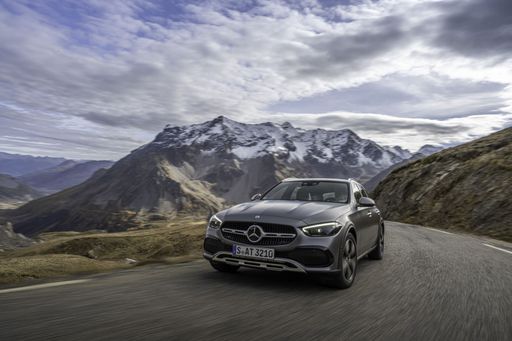 @ group-media.mercedes-benz.com
@ group-media.mercedes-benz.com
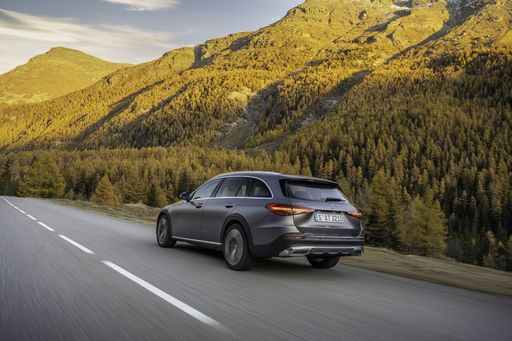 @ group-media.mercedes-benz.com
@ group-media.mercedes-benz.com
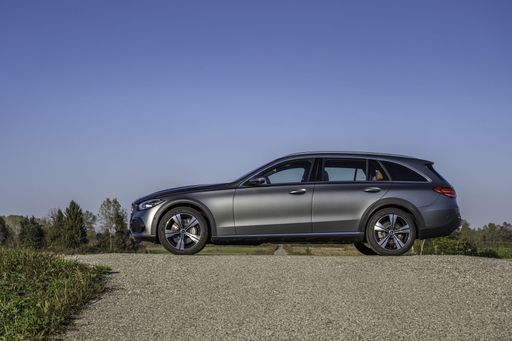 @ group-media.mercedes-benz.com
@ group-media.mercedes-benz.com
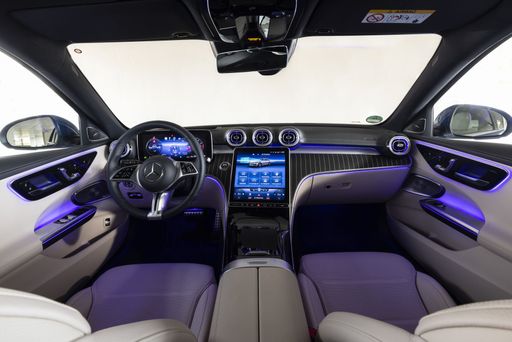 @ group-media.mercedes-benz.com
@ group-media.mercedes-benz.com
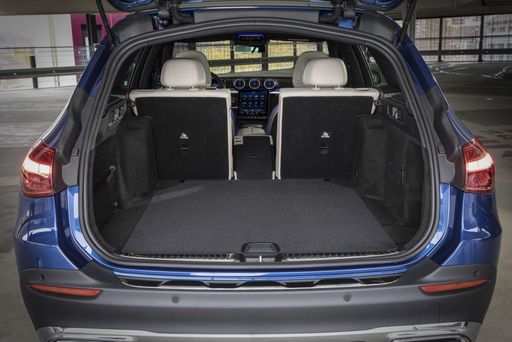 @ group-media.mercedes-benz.com
@ group-media.mercedes-benz.com
VW Golf Variant
The VW Golf Variant represents a seamless blend of practicality and style, catering to drivers who require extra space without compromising on aesthetics. Its refined design and spacious interior make it an ideal choice for families and individuals with an active lifestyle. With advanced technology and a smooth driving experience, this estate car continues to impress within its class.
details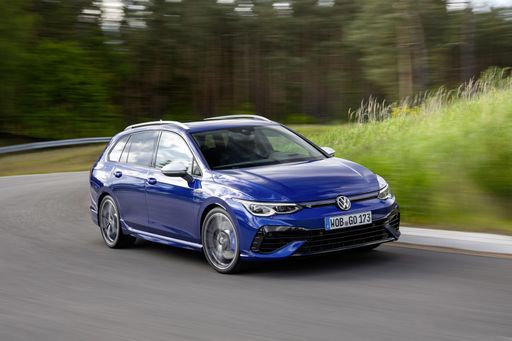 @ Volkswagen
@ Volkswagen
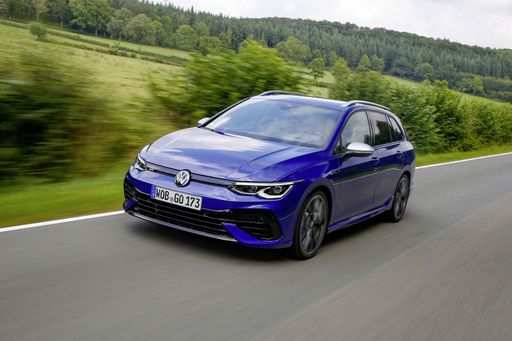 @ Volkswagen
@ Volkswagen
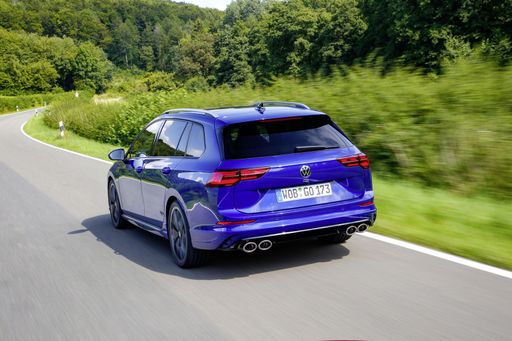 @ Volkswagen
@ Volkswagen
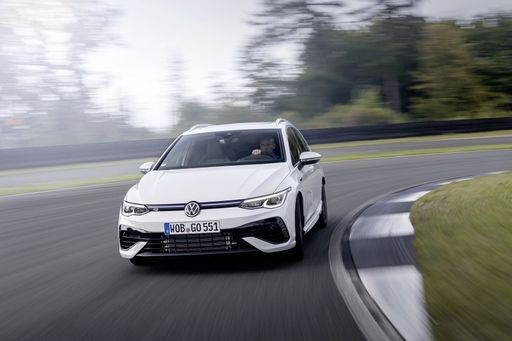 @ Volkswagen
@ Volkswagen
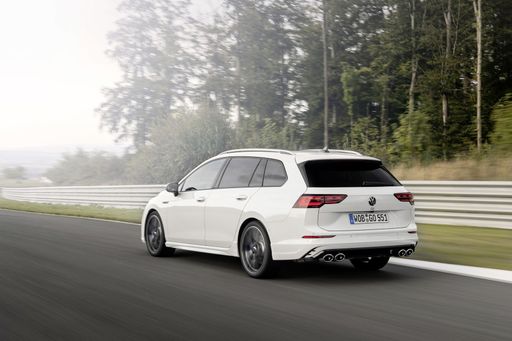 @ Volkswagen
@ Volkswagen
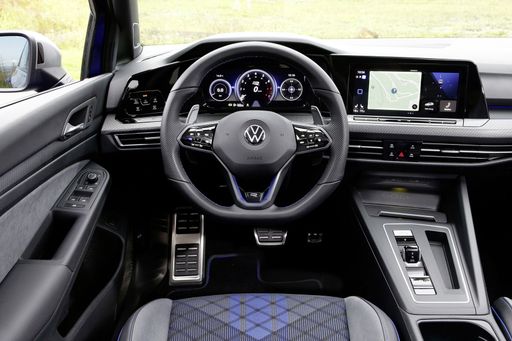 @ Volkswagen
@ Volkswagen
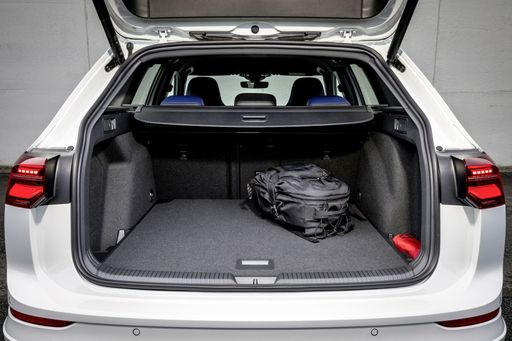 @ Volkswagen
@ Volkswagen
When it comes to choosing the perfect wagon, two names often come to mind: the Mercedes C-Klasse T-Modell and the VW Golf Variant. Each car offers a distinct set of features and innovations, making the comparison an intriguing one for buyers seeking performance, comfort, and technology.
Design and Practicality
The Mercedes C-Klasse T-Modell boasts a stunning design with sleek lines and a modern aesthetic that captures the essence of luxury. Its dimensions range from 4751 mm to 4842 mm in length, 1820 mm to 1900 mm in width, and a height varying from 1454 mm to 1494 mm, providing a commanding presence on the road. On the other hand, the VW Golf Variant, measuring 4631 mm in length, 1789 mm in width, and 1487 mm in height, presents a more compact and practical design that appeals to urban drivers.
When it comes to cargo capacity, the C-Klasse offers between 490L of trunk space compared to the Golf Variant’s impressive 611L. Both cars comfortably seat five passengers, yet the Mercedes shines with its more upscale interior and advanced material choices.
Engine Options and Performance
The engine lineup for the C-Klasse T-Modell is extensive, featuring options such as petrol MHEV, diesel MHEV, and plug-in hybrid variants. With horsepower ratings from 193 up to a powerful 680 HP, and torque figures reaching 1020 Nm, this vehicle is engineered for the performance enthusiast. The acceleration capabilities are also notable, with some models achieving 0-100 km/h in as little as 3.4 seconds.
Conversely, the VW Golf Variant offers a more modest range of engines. With petrol, diesel, and petrol MHEV variants, power outputs span from 116 HP to a maximum of 333 HP. The Golf’s acceleration times are respectable, ranging from 4.8 to 10.5 seconds for the 0-100 km/h sprint, which is adequate for daily driving and spirited weekend outings.
Fuel Efficiency and Environmental Impact
In terms of efficiency, the Mercedes C-Klasse T-Modell provides various consumption figures, with the most efficient options consuming as little as 4.7 L/100 km for diesel variants. Petrol MHEV offerings showcase electric ranges of up to 112 km, which is an appealing advantage, especially in urban settings.
The VW Golf Variant competes closely with fuel consumption figures between 4.4 to 5.6 L/100 km, making it a strong contender for eco-conscious drivers. Both vehicles feature competitive CO2 emissions, though the C-Klasse T-Modell does include more environmentally friendly options through its hybrid models.
Innovation and Technology
Mercedes-Benz is known for its cutting-edge technology, and the C-Klasse T-Modell is no exception. With features like MBUX infotainment system, advanced driver-assistance systems, and a host of connectivity options, driving the C-Class feels like stepping into the future.
The VW Golf Variant is also packed with technology, offering an intuitive infotainment system that is easy to use. Digital cockpit options and advanced safety features provide drivers with confidence while on the road. Both brands have made significant strides in enhancing the user experience, but the C-Klasse tends to take the lead with its luxurious offerings.
Conclusion: The Final Verdict
Choosing between the Mercedes C-Klasse T-Modell and the VW Golf Variant ultimately comes down to personal preference. The C-Klasse offers an unparalleled luxury experience combined with high performance, advanced technology, and superior efficiency in its hybrid variant. Meanwhile, the Golf Variant stands out with its practicality, spacious trunk, and impressive fuel efficiency, appealing more to everyday drivers.
Whether you prefer the luxury and performance of the Mercedes or the practicality of the VW, both vehicles deliver fantastic options for anyone in the market for a premium wagon.

|

|
|
|
|
Costs and Consumption |
|
|---|---|
|
Price
42400 - 115300 £
|
Price
25200 - 48200 £
|
|
Consumption L/100km
0.4 - 9 L
|
Consumption L/100km
4.3 - 8.2 L
|
|
Consumption kWh/100km
-
|
Consumption kWh/100km
-
|
|
Electric Range
11 - 112 km
|
Electric Range
-
|
|
Battery Capacity
19.50 kWh
|
Battery Capacity
-
|
|
co2
11 - 206 g/km
|
co2
114 - 185 g/km
|
|
Fuel tank capacity
40 - 66 L
|
Fuel tank capacity
45 - 55 L
|
Dimensions and Body |
|
|---|---|
|
Body Type
Estate
|
Body Type
Estate
|
|
Seats
5
|
Seats
5
|
|
Doors
5
|
Doors
5
|
|
Curb weight
1755 - 2235 kg
|
Curb weight
1366 - 1621 kg
|
|
Trunk capacity
360 - 490 L
|
Trunk capacity
611 L
|
|
Length
4751 - 4842 mm
|
Length
4631 - 4651 mm
|
|
Width
1820 - 1900 mm
|
Width
1789 mm
|
|
Height
1454 - 1494 mm
|
Height
1462 - 1487 mm
|
|
Payload
440 - 565 kg
|
Payload
489 - 547 kg
|
Engine and Performance |
|
|---|---|
|
Engine Type
Petrol MHEV, Plugin Hybrid, Diesel MHEV
|
Engine Type
Petrol MHEV, Petrol, Diesel
|
|
Transmission
Automatic
|
Transmission
Automatic, Manuel
|
|
Transmission Detail
Automatic Gearbox
|
Transmission Detail
Dual-Clutch Automatic, Manual Gearbox
|
|
Drive Type
Rear-Wheel Drive, All-Wheel Drive
|
Drive Type
Front-Wheel Drive, All-Wheel Drive
|
|
Power HP
186 - 680 HP
|
Power HP
116 - 333 HP
|
|
Acceleration 0-100km/h
3.4 - 8.8 s
|
Acceleration 0-100km/h
4.8 - 10.5 s
|
|
Max Speed
226 - 280 km/h
|
Max Speed
202 - 250 km/h
|
|
Torque
250 - 1020 Nm
|
Torque
220 - 420 Nm
|
|
Number of Cylinders
4
|
Number of Cylinders
4
|
|
Power kW
137 - 500 kW
|
Power kW
85 - 245 kW
|
|
Engine capacity
1496 - 1999 cm3
|
Engine capacity
1498 - 1984 cm3
|
General |
|
|---|---|
|
Model Year
2024 - 2025
|
Model Year
2024 - 2025
|
|
CO2 Efficiency Class
E, F, G, B, D
|
CO2 Efficiency Class
D, C, G, F
|
|
Brand
Mercedes-Benz
|
Brand
VW
|
Mercedes C-Class Wagon
Introduction to the Mercedes-Benz C-Class Wagon
The Mercedes-Benz C-Class Estate, more popularly known as the T-Modell, represents a striking blend of luxury, practicality, and advanced automotive technology. This vehicle is tailored for those who require the elegance and sophistication typical of Mercedes-Benz, while also needing versatility and space. In this article, we will delve into its technical prowess and innovative features that make it a standout in the automotive world.
Powertrain and Performance: A Range to Impress
The C-Class T-Modell offers a diverse range of engine options designed to cater to various driving preferences. From the efficient diesel mild-hybrid powertrains, delivering impressive torque and fuel efficiency, to the robust petrol mild-hybrid models, the C-Class Estate is equipped to handle various driving demands. The plug-in hybrid variants provide exceptional electric-only ranges, boasting up to 113 km on a single charge, making it a suitable companion for both city commutes and longer journeys.
Innovative Mild-Hybrid Technology
Mercedes-Benz integrates its cutting-edge mild-hybrid technology across multiple models within the C-Class Estate range. This system utilises a powerful battery and starter-generator motor to assist the internal combustion engine. This results in smoother acceleration, reduced fuel consumption, and lowers emissions, all contributing to an efficient yet dynamic driving experience.
Dynamic Handling and Driveability
Equipped with an advanced 9-speed automatic transmission, the C-Class T-Modell offers seamless gear changes and optimised driveability, ensuring both comfort and performance are prioritised on the road. Drivers have the flexibility to choose between rear-wheel drive for a classic driving experience, or the 4MATIC all-wheel drive for added stability and traction, ideal for diverse weather conditions and terrains.
Luxurious Interior and Advanced Features
Inside, the C-Class Estate is crafted to offer unparalleled luxury and technological innovation. Prominent features include the MBUX multimedia system with voice control, a large central display screen, and optional augmented reality navigation, which collectively enhance the driving experience. The cabin is spacious, with a generous load volume making it perfect for family outings or business trips, while the premium materials and sophisticated design reflect Mercedes-Benz’s commitment to luxury.
Safety and Driver Assistance Systems
As expected from a brand renowned for safety, the C-Class T-Modell comes equipped with an array of safety and driver assistance systems. Adaptive cruise control, lane-keeping assist, and a host of other intelligence-based systems are designed to protect occupants while reducing driver fatigue, making each journey safer and more comfortable.
Conclusion
The Mercedes-Benz C-Class Estate stands as a testament to innovation in automotive design, marrying luxury with practicality. Its variety of powertrains, cutting-edge technology, and focus on safety make it a compelling choice for those seeking a versatile yet sophisticated car. Whether for long distances or daily city drives, the C-Class T-Modell delivers a driving experience that is both engaging and effortlessly efficient.
VW Golf Variant
The Versatile Allure of the VW Golf Variant
The VW Golf Variant continues to solidify its place in the automotive world as a resourceful and reliable estate car, sweeping across European roads with its sleek design and robust engineering. In the 2024 model year, VW introduces a range of technical enhancements and innovative features that elevate this standard bearer of practicality and performance.
Powertrains: Efficiency Meets Performance
Under the bonnet, the VW Golf Variant offers an impressive variety of powertrains designed to satisfy varying needs and driving conditions. From the refined 1.5 TSI petrol engines, available in manual and dual-clutch automatic transmission options, to the fuel-sipping 2.0 TDI diesel variants, the Golf Variant aims to strike a balance between performance and economy. Petrol mild-hybrid configurations further enhance efficiency, offering a smart blend of power delivery and reduced CO2 emissions.
Engine Specifications and Fuel Consumption
The power range spans from 116 PS in the entry-level models up to a robust 333 PS in the Volkswagen Golf Variant R, catering to those with a craving for speed and agility. Fuel consumption varies according to engine choice, starting as low as 4.4 L/100km for the efficient diesel models. Such performance is complemented with low CO2 emissions, aligning the vehicle with modern environmental standards.
Innovative Features and Technology
VW’s iconic estate car thrives on technology-driven advancements. With seamless integration of an advanced infotainment system and digital cockpit, driving becomes both intuitive and enjoyable. The variety of safety features, such as adaptive cruise control and lane-keeping assist, ensure confidence behind the wheel. Embracing a future-forward approach, the mild-hybrid variants introduce energy recuperation systems that optimise fuel usage, showcasing VW's commitment to sustainability.
Interior Comfort and Practicality
The VW Golf Variant is synonymous with comfort and spaciousness. With a commodious boot space of 611 litres, it accommodates families and professionals alike, making it an ideal choice for long journeys and everyday errands. High-quality materials adorn the interior, providing drivers and passengers with a sophisticated and comfortable environment.
Performance and Driving Dynamics
Driving enthusiasts will appreciate the Variant’s dynamic handling, facilitated by an array of engine choices and drivetrain configurations. Whether it's the front-wheel-drive versions that offer exceptional maneuverability or the 4MOTION all-wheel-drive option in the R variant providing enhanced traction, the Golf Variant promises an engaging driving experience.
Conclusion: A Staple for Modern Motoring
The 2024 VW Golf Variant stands as a testament to VW's legacy of developing cars that combine practicality, performance, and cutting-edge technology. Whether it is serving as a family car or a dynamic commuter, its various configurations ensure that it remains a formidable choice for a wide array of drivers.
Which drive types are available for the Mercedes C-Class Wagon?
Available as Rear-Wheel Drive or All-Wheel Drive.
The prices and data displayed are estimates based on German list prices and may vary by country. This information is not legally binding.
